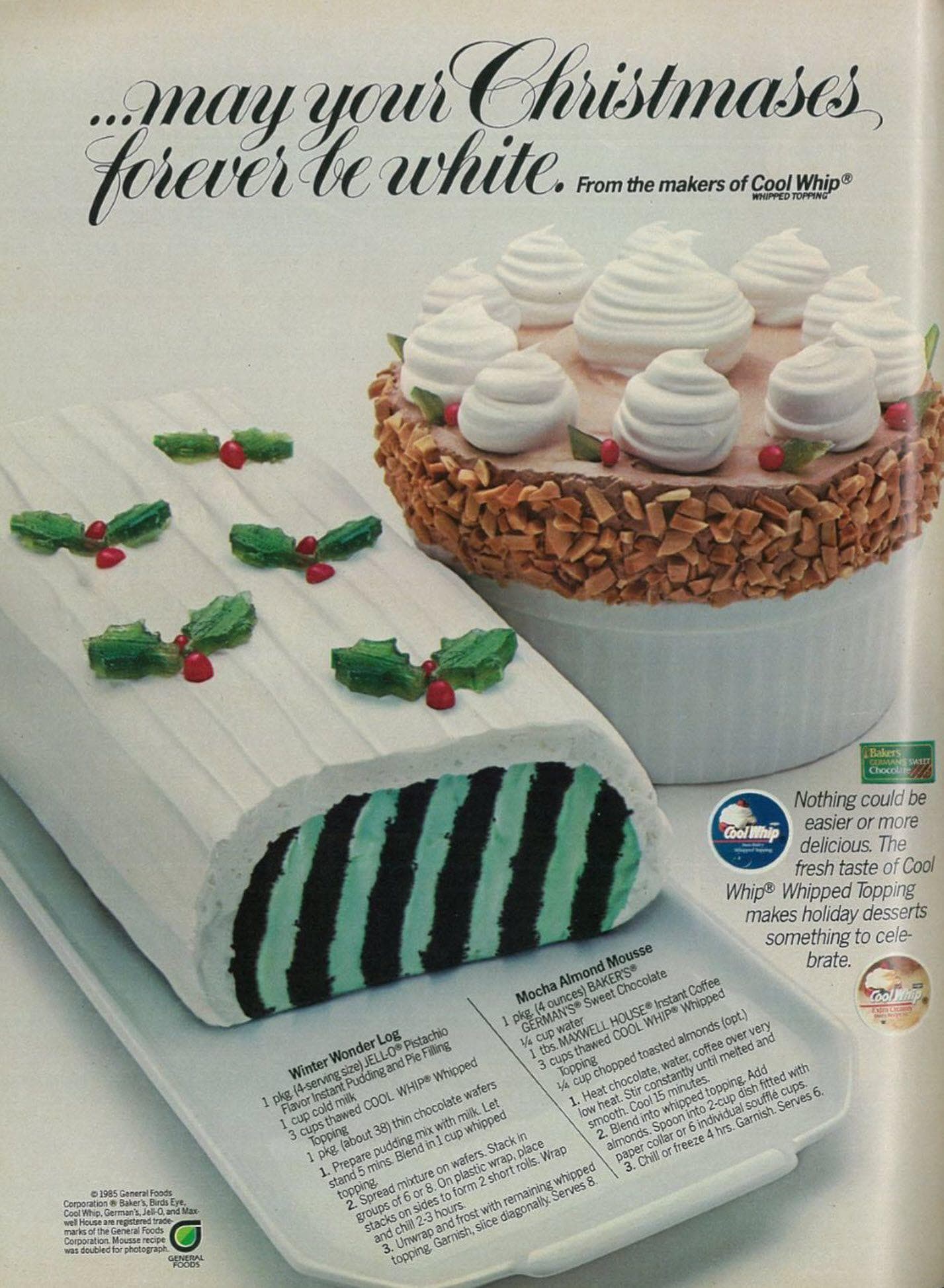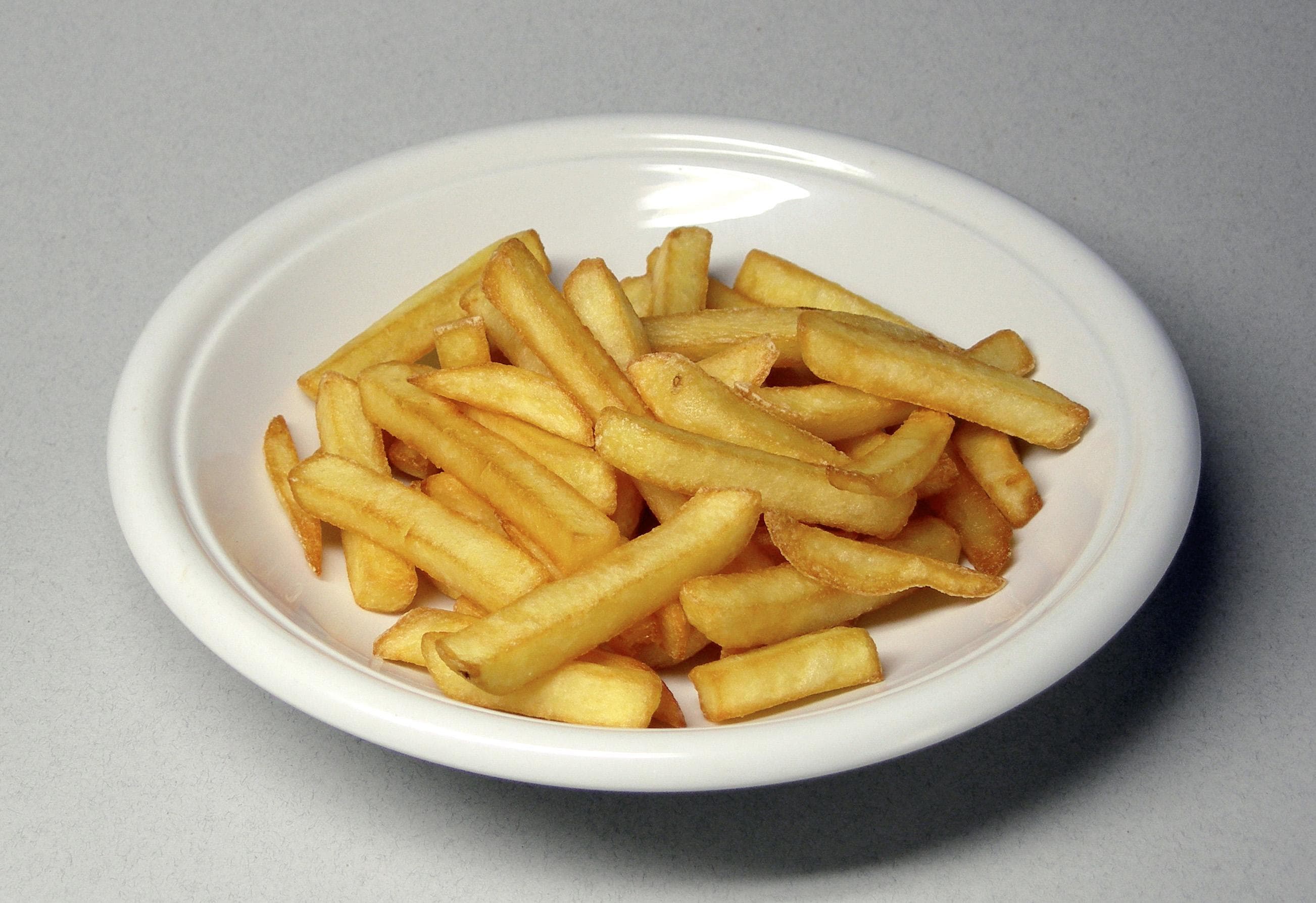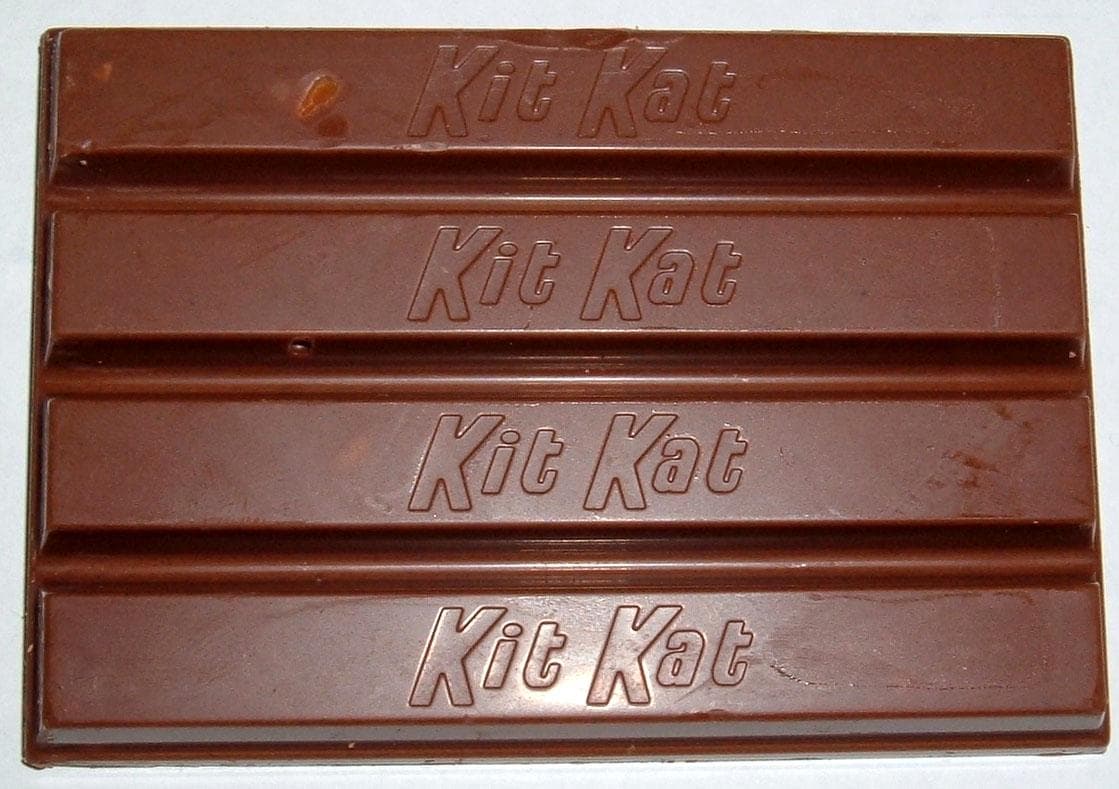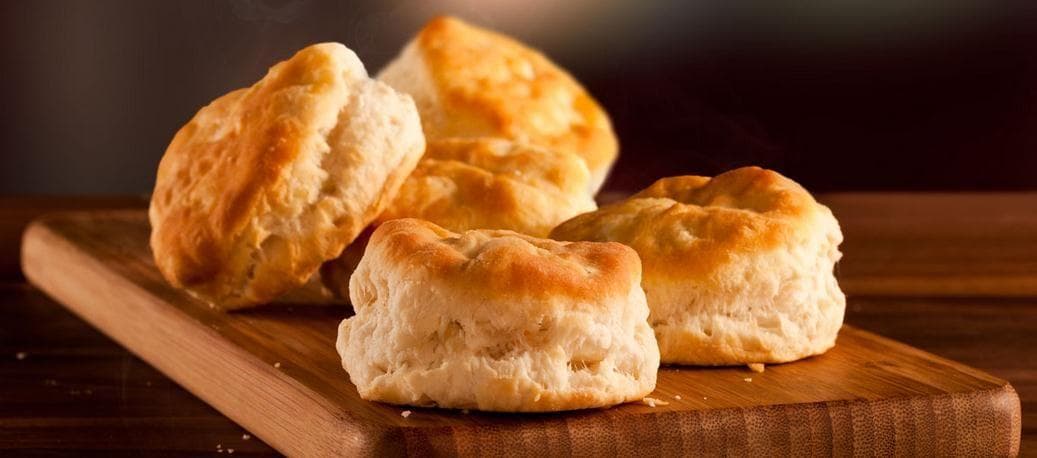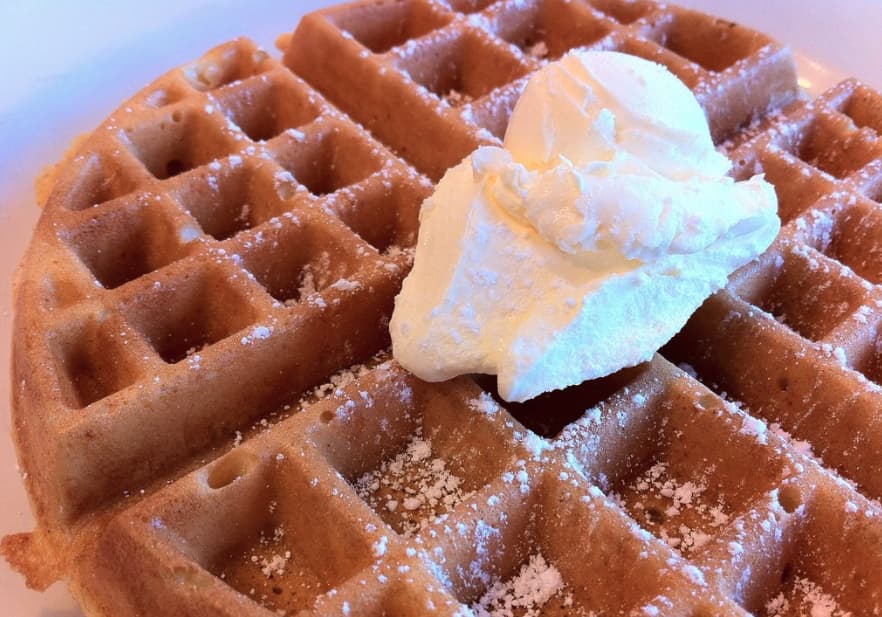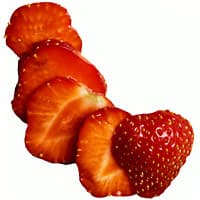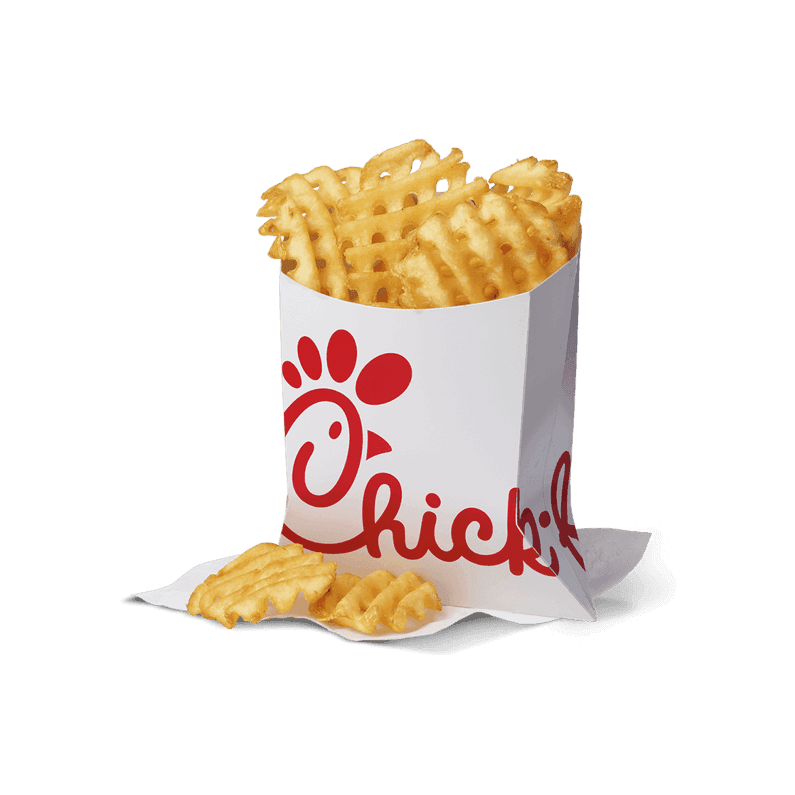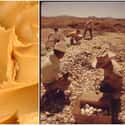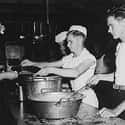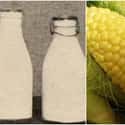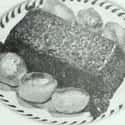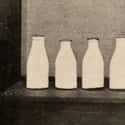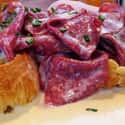-
(#1) Prune Pudding
First Lady Eleanor Roosevelt wasn’t just going to sit back and let this whole “Great Depression” nonsense keep her country down. The famous feminist was an early supporter/patron saint of the home economics movement, and she practiced what she preached: food served in the White House during the Depression was famously the dreariest in history.
Poor FDR had to eat—at least when the press and/or guests were around—denture-friendly fare such as “deviled eggs served in a tomato sauce with a side of mashed potatoes” with “prune whip” (pudding) for dessert. The humble and much-maligned prune, along with its ragtag dried fruit cousins, was a common substitute during the Depression for pricey fresh fruit.
-
(#2) 'Surreal' Peanut Butter-Stuffed Onions Kept Things Super-Cheap
Food historians Andrew Coe and Jane Ziegelman, authors of A Square Meal, prepared peanut-butter-stuffed baked onions using a Depression-era cookbook and lived to tell the tale to the New York Times. How did the dish turn out? “It was not a popular addition to the dinner table,” Coe said. Ziegelman called the experience “surreal,” noting sagely that “peanut butter has nothing to say to a baked onion.”
Who’s to blame for this unholy alliance of peanut butter and baked onion, this wretched PB&BO? The well-intended but seemingly palateless Bureau of Home Economics, whose professional home economists published recipes and articles in our fine nation’s newspapers and magazines urging housewives to become “budgeteers” and serve this glop to their families.
-
(#3) Ritz Mock Apple Pie Subbed Crackers for Apples
Thanks to some kind of culinary Stockholm Syndrome, this deceitful treat is known today as a “Depression-era favorite.” The Ritz Mock Apple Pie is a pastry imposter: it’s an apple-free apple pie, with Ritz crackers—and a pinch of desperation—meant to stand in for America’s favorite fruit/doctor-repellant.
How does it work? It’s a soggy charade: the sugar, cinnamon, butter, and lemon juice gang up with the buttery taste and unique texture of the Ritz crackers to convince your senses and mouth hole that actual apples were harmed in the making of this revolting cracker pie.
-
(#4) The First Lady Promoted Spaghetti with Boiled Carrots and White Sauce
Eleanor Roosevelt was doing the best she could with the hand she was dealt. How would you like to be the First Lady during the Great Depression in a time when Lady Magic in the kitchen was supposed to help us through the crisis? That said, Roosevelt promoted some truly foul dishes in her efforts to promote savvy home economics, such as this off-putting “casserole” made from spaghetti, boiled carrots, and a simple white sauce of milk, flour, salt, and butter.
The first step is to cook the spaghetti for a sadistic 25 minutes, which in a sane world means Step #2 is to order the biggest pizza Domino's will make. But this is the Great Depression we’re talking about, so the idea is to get the noodles mushy so they pair nicely with the boiled-to-death carrots and the pennies worth of creamy sauce. The result? A “vehicle for nutrition and nutrients” that probably made people want to eat their old Flapper hats instead.
-
(#5) Vinegar Cobbler Faked Fruit Flavor
Vinegar Cobbler belongs to a class of culinary freaks known as the “Desperation Pies,” which sounds like a bad joke from a Thanksgiving-themed Cathy comic but is actually what food historians and bakers call cheap-ass fruitless pies that crept dreadfully into the spotlight during the Great Depression (see also the Ritz Mock Apple Pie). Instead of chunks of fresh apples, you use apple cider vinegar to fake the acidic taste on a budget.
Believe it or not, in 2015, James Beard Award-winning chef Chris Shepherd started serving Vinegar Cobbler at his Houston restaurant, Underbelly. It reportedly tastes like a custard made from salt and vinegar chips, a rare dessert that “leaves the roof of your mouth tingling.”
-
(#6) Mulligan's Stew Was Seasoned with Tobacco
This one isn’t your ordinary Great Depression dish: this is straight-up hobo food. Mulligan’s Stew, according to Errol Lincoln Uys, author of Riding the Rails: Teenagers on the Move During the Great Depression, is made from (stolen) onions, corn, and potatoes, added to a stew of mixed foraged greens, “bits and pieces” of meat, and a handful of navy beans likely “carried in a pocket for a month.”
The secret ingredient? A “a smattering of Bull Durham tobacco and lint,” presumably either to enrich the broth or to make your weak-gutted hobo companions nauseated so you could more easily steal their bindles.
-
(#7) "Milkorno" Mixed Milk and Corn for an Unlikely Superfood
Mad scientists at Cornell University in 1933 invented a gruel called Milkorno, a mix of powdered skim milk, corn meal, and salt, to help families in need “stretch budgets without sacrificing nourishment," promising “Meals For a Family of 5 For $5 a Week.” The name comes from combining "milk” and “corn” with the surprised “Oh!” that guests of Eleanor Roosevelt probably made when she explained what she tricked them into eating at the White House later that same year.
There were also Milkorno’s step-siblings Milkwheato and Milkoato. Milkwheato, in particular, did big business: the government purchased 25 million pounds of the dystopian dust for use in hunger relief efforts. When boiled, every member of the Milkorno family turns into porridge, which makes you wonder what the Bureau of Home Economics was thinking when it suggested soggy Milkorno as a substitute for noodles in Chinese chop suey.
-
(#8) Kraft Macaroni & Cheese Dinner Was Born
The Great Depression gets a pretty bad rap, but hey: it did give the world the Kraft Macaroni & Cheese Dinner. In 1937, Kraft heard about a salesman for the Tenderoni Macaroni company of St. Louis going rogue and selling his noodles with packets of Kraft grated cheese attached. They hired the now-forgotten national hero to promote the concept and started selling it to cash-strapped Americans at the low, low price of 19 cents for four servings.
Speed was a big selling point, too: one early print ad featured a happy and bewildered husband asking, “How the deuce did you make this keen macaroni and cheese so fast? Why, we just got home!”
-
(#9) There Were Loaves Galore
Food historians say that loaves were “very popular” during the Great Depression because they “were made from an ingredient and a cheap thing that stretches the ingredient out.” There was liver loaf, lima bean loaf, peanut loaf, and, as a “sparingly apportioned luxury,” actual meatloaf. Lima bean loaf allegedly tastes a “bit like falafel” but is best with “lots of highly seasoned gravy.”
Even actual meat loaf was relatively affordable when it was “padded out” with “bread and crackers, quick-cooking oats, tapioca, breakfast cereal, and powdered sauce mixes.” Meanwhile, like today, “bouillon, canned soup, and Heinz ketchup … added flavor and moistness at small cost.”
-
(#10) Dandelion Salad Was Sourced from Yards and Parks
Historians believe one of the “travesties” of federal Depression-era hunger relief and home economics is that the government didn’t look to immigrants for inspiration. Italian immigrants, for example, were known for food that was “cheap and delicious and highly nutritious,” but the government wasn’t pushing people to eat like them at all, instead calling for abominations such as mushy spaghetti with boiled carrots and peanut-butter-stuffed onions.
One delicious and vitamin-packed ingredient foraged by Italian immigrant women in New York City—and by people all across the country—were dandelion greens, which could be “harvested” from parks, yards, and vacant lots in the early spring. The leaves could be added to salads or sautéed in olive oil and added to cooked white beans for a tasty, nutritious, virtually free meal.
-
(#11) Gelatin Was a Cutting-Edge Food
Gelatin was a cheap, cutting-edge protein source in the 1930s, meaning it made its way into a lot of Depression-era cookbooks. Let’s take corned beef luncheon salad, for example. It’s a face-twistingly repulsive collision of canned corned beef, gelatin, canned peas, vinegar, and lemon juice. Those brave enough to try it with 21st-century sensibilities describe it as “wrong in every way possible - just from the color to the smell, the texture, the flavor, the mouthfeel.”
The smell, as you might imagine, is reminiscent of canned cat food; the look is bright and slimy, like something you’d pay to have removed from your body after weeks of increasing discomfort.
-
(#12) Kids, Especially, Drank a Ton of Milk
Cow’s milk is supposed to do a body a good, give you a hilarious mustache, and compel you to constantly ask others if they have it. We get it. But the amount of cow’s milk they funneled into school-aged kids during the Great Depression is alarming; the government advised a quart per day.
Milk-mad nutritionists at the time placed a “tremendous importance” on the stuff and considered it a complete “wonder food.” School lunches almost always featured milk on the plate as well, in the form of kid favorites such as creamed cabbage, creamed carrots, and cornstarch pudding.
-
(#13) Creamed Chipped Beef on Toast Was Nicknamed "Sh*t on a Shingle" by US Soldiers
In their book A Square Meal: A Culinary History of the Great Depression, culinary historians Jane Ziegelman and Andy Coe think call creamed chipped beef, a revolting combination of "canned corned beef, plain gelatin, canned peas, vinegar and lemon juice," "wrong in every possible way" (though some are still nostalgic for it today).
Nicknamed "SOS" for "sh*t on a shingle," creamed chipped beef was served on bread or crackers ("shingle" was military slang for a piece of toast). This hearty but unpleasant concoction first became popular during the Depression. Later, World War II servicemen would also dine on creamed chipped beef, and it even became a running joke on the TV show M*A*S*H, set during the Korean War.
-
(#14) Hot Dogs Were a Mainstay of Dishes Like Hoover Stew
In this video, Clara (who was born in 1916) demonstrates how to make "the poor man's meal": first, fry up some potatoes and onions; then, add a few slices of hot dog. Hot dogs were a staple in many Depression-era recipes with bleak names like "poor man's stew." "Hoover stew" (named for the president, naturally) combines sliced hot dog rounds with cooked macaroni, two cans of stewed tomatoes, and canned corn and/or peas.
The results may sound bleak, but modern cooks are hard at work reclaiming Hoover stew today (though they sometimes substitute some fancier ingredients, like fresh vegetables instead of canned).
-
(#15) Red Velvet Cake Made Up for Its Deficiencies with Plenty of Red Food Coloring
Now a mainstay of overpriced hipster cupcake stores everywhere, red velvet cake may have started as a cheap substitute for a proper chocolate cake.
The origins of red velvet cake are disputed. Some claim it was invented, or at least popularized, in the 1920s by the Waldorf-Astoria Hotel in New York; others, that the cake is Southern in origin. However, some believe that the cake was inspired by Depression-era homemakers substituting inexpensive vegetable oil for pricier butter and adding only a tiny smidgen of real cocoa to make what has been called charitably "a cousin of chocolate cake." (Others argue the culprit was World War II-era rationining of sugar and butter, though recipes for red velvet cake predate the war.)
The original red color may have been the natural result of combining the cake's vinegar and buttermilk with baking soda and old-fashioned cocoa powder (today's cocoa powder doesn't create the same effect). Then again, the red color might also have been just a cheap way to make an inferior cake look fancy.
New Random Displays Display All By Ranking
About This Tool
The Great Depression in the United States began in 1929. In the following 10 years, society experienced massive unemployment and food shortages. In order to survive, people had to be creative and eat what they had never thought of eating. Many of the foods of the time are still common, and they don't seem to be weird foods on their own, but the taste when paired together is not desirable.
These weird foods are all based on some economical ingredients, and they have no disadvantages except that they are unpalatable. You could check the random tool if you are interested in some weird foods that let people get through the difficult time.
Our data comes from Ranker, If you want to participate in the ranking of items displayed on this page, please click here.




